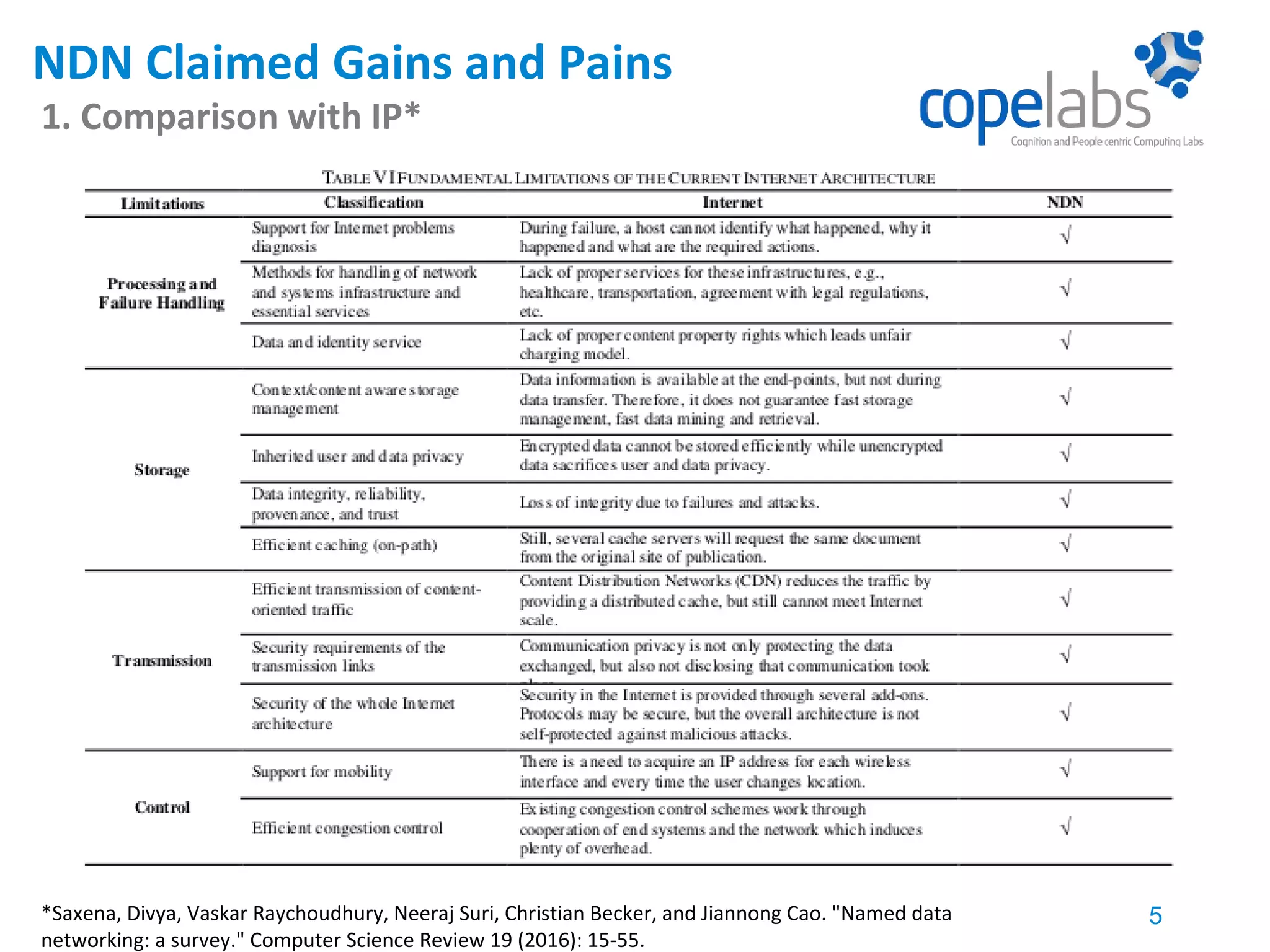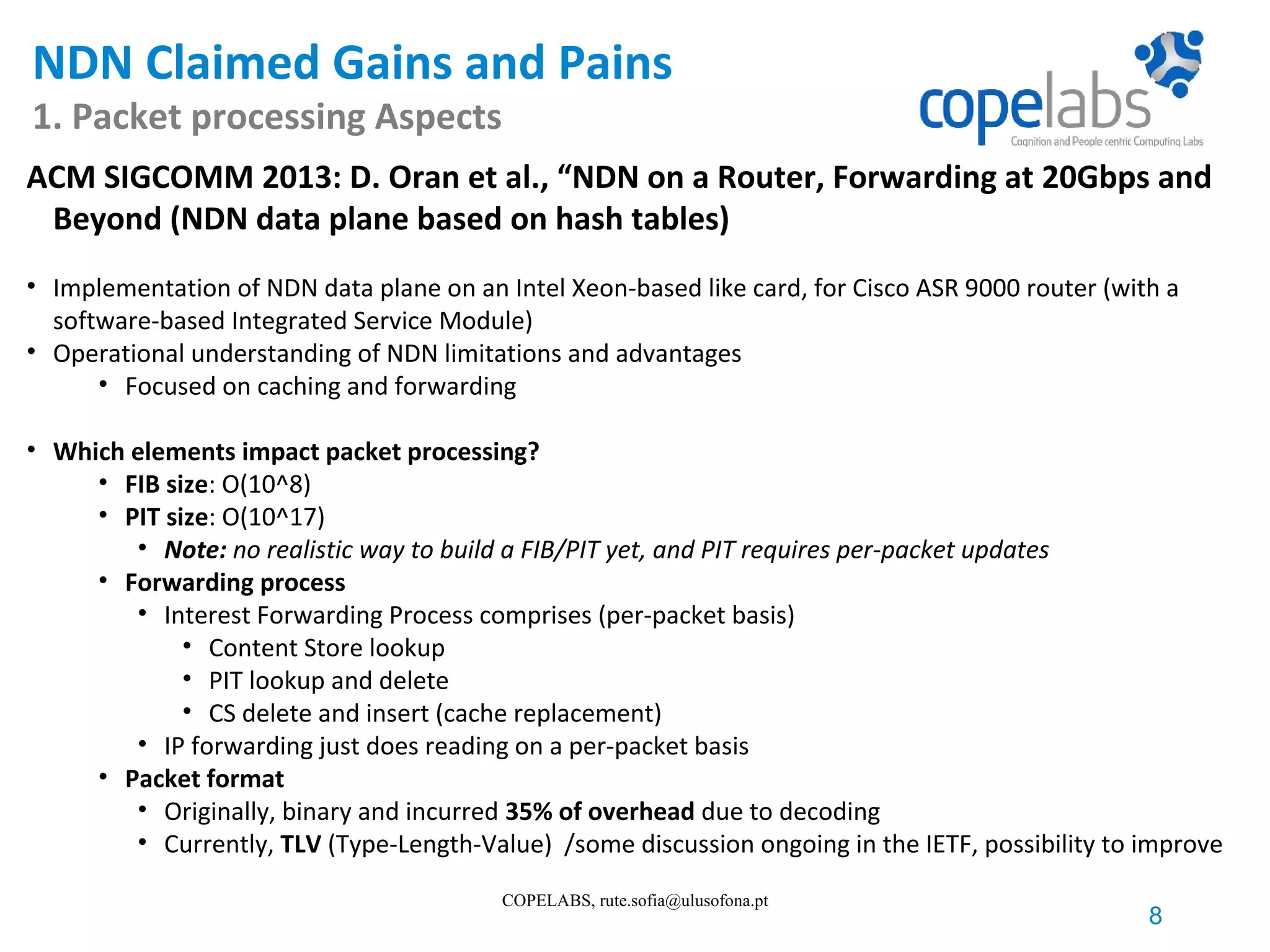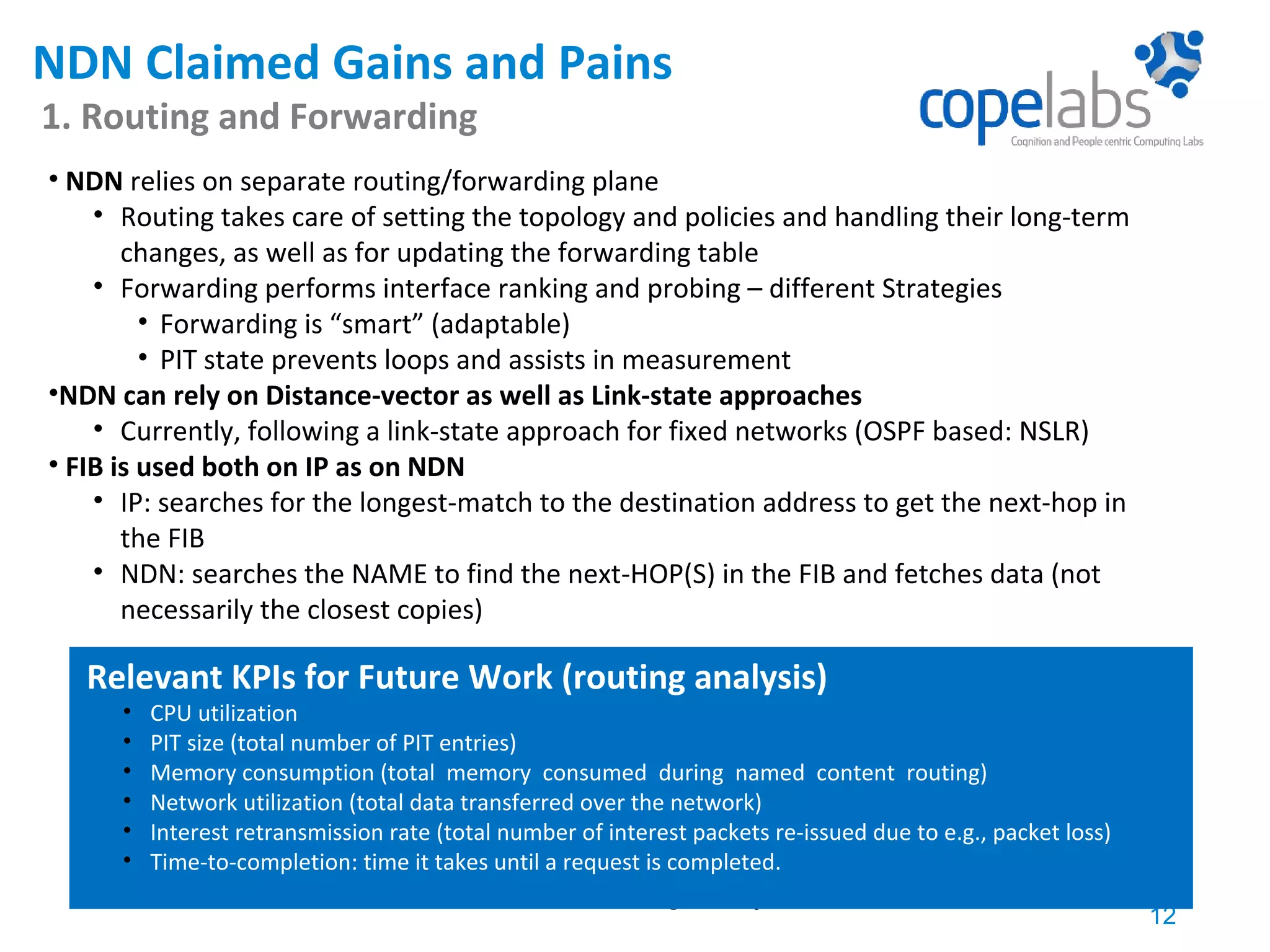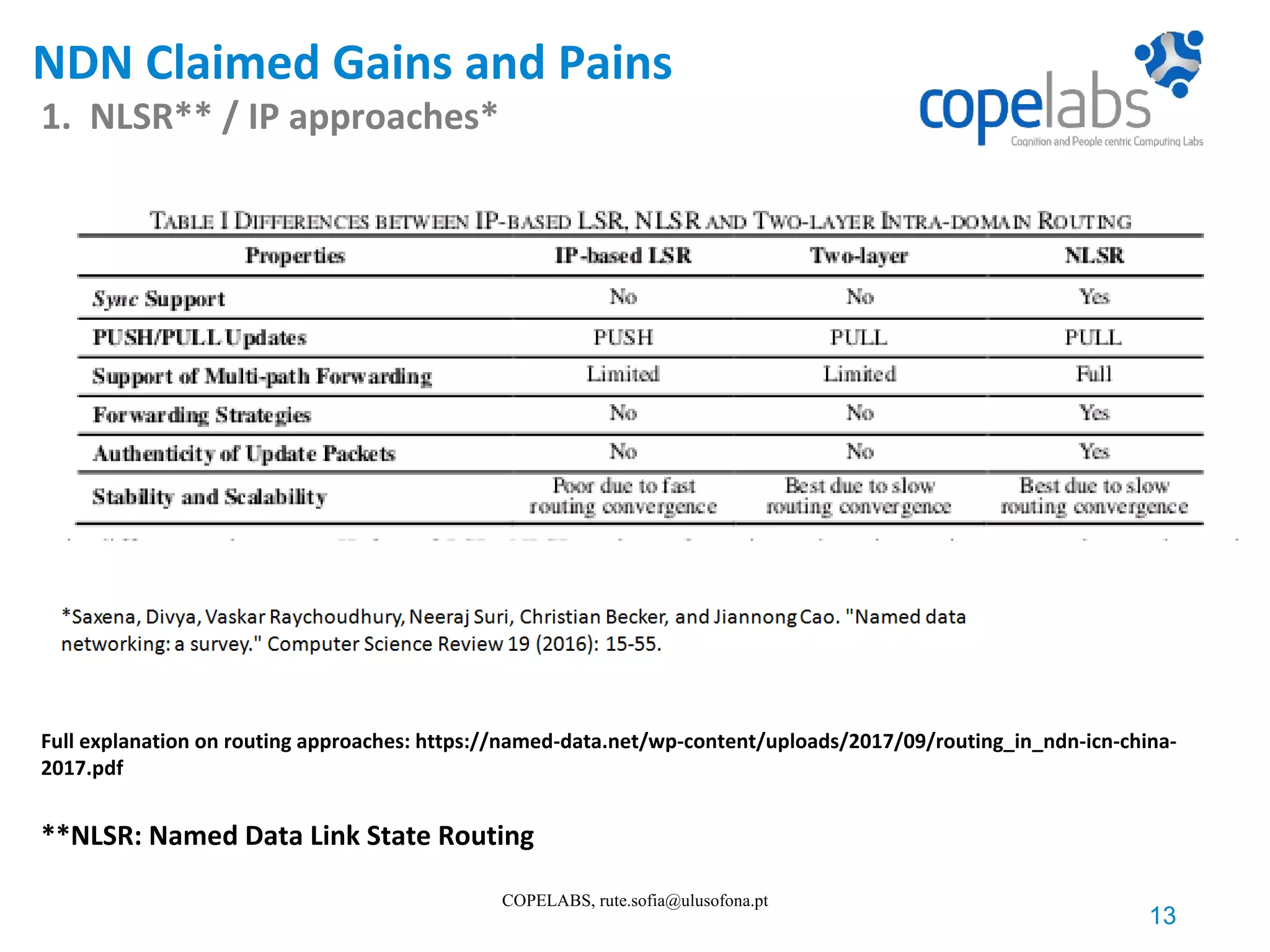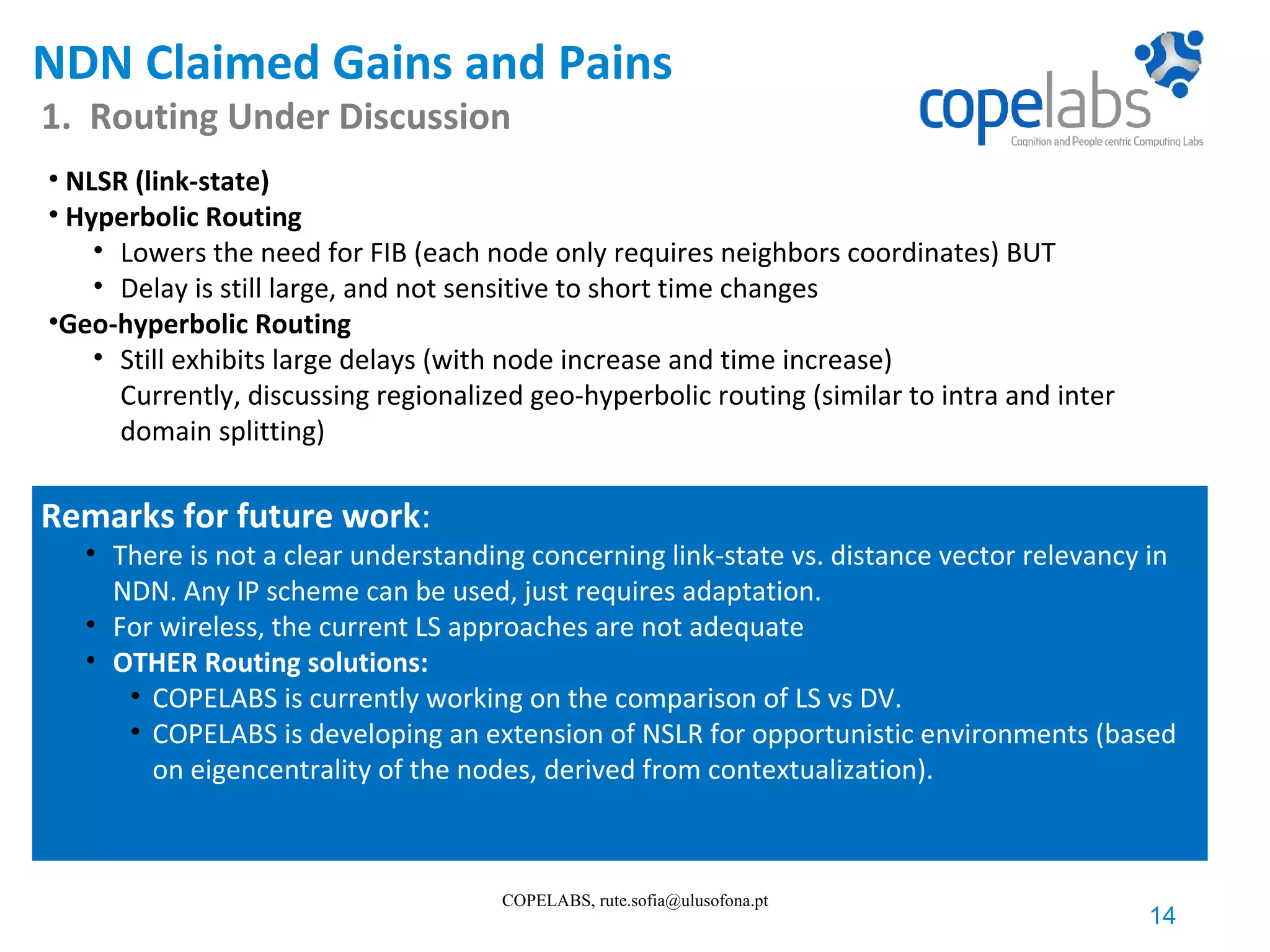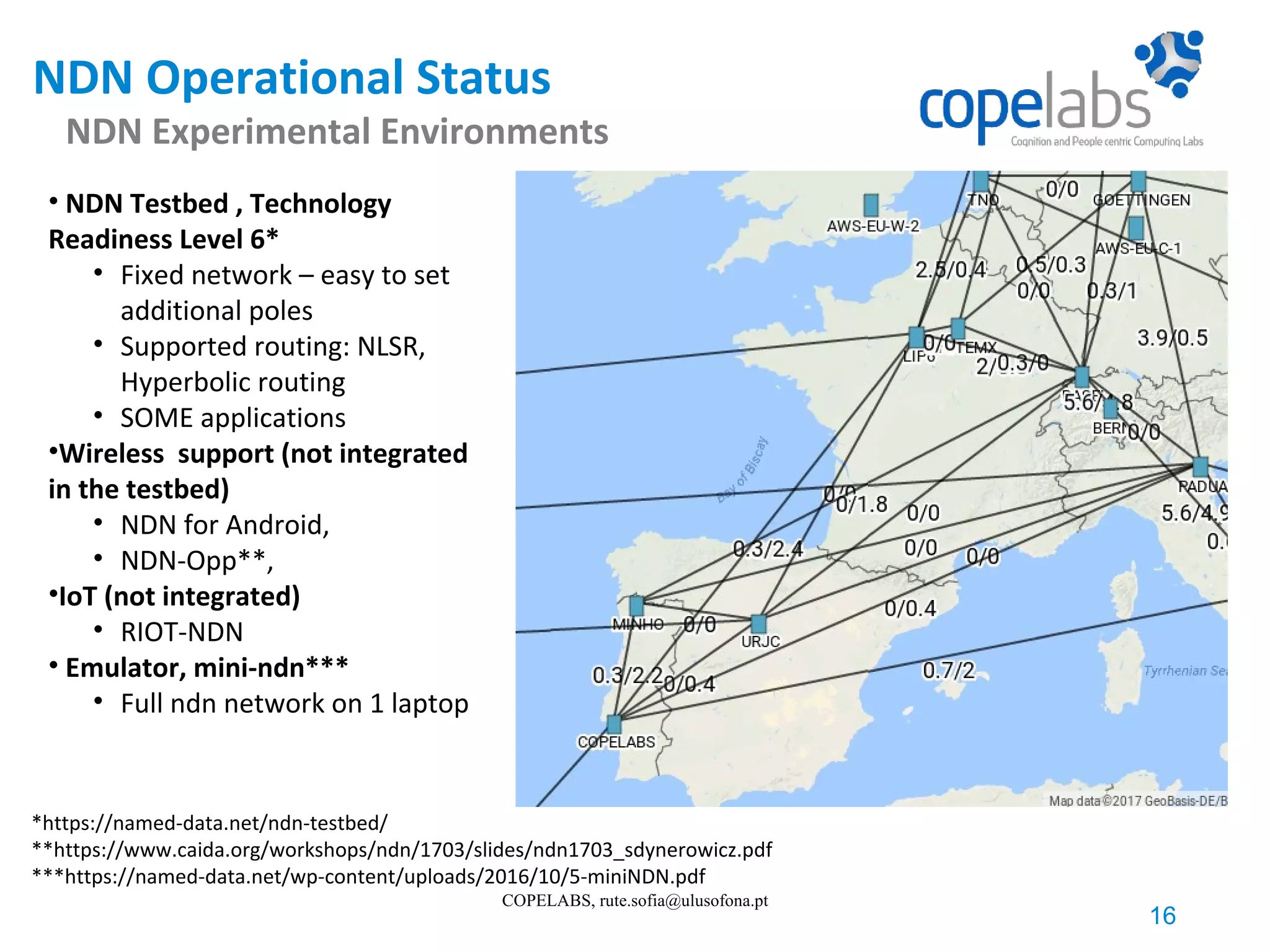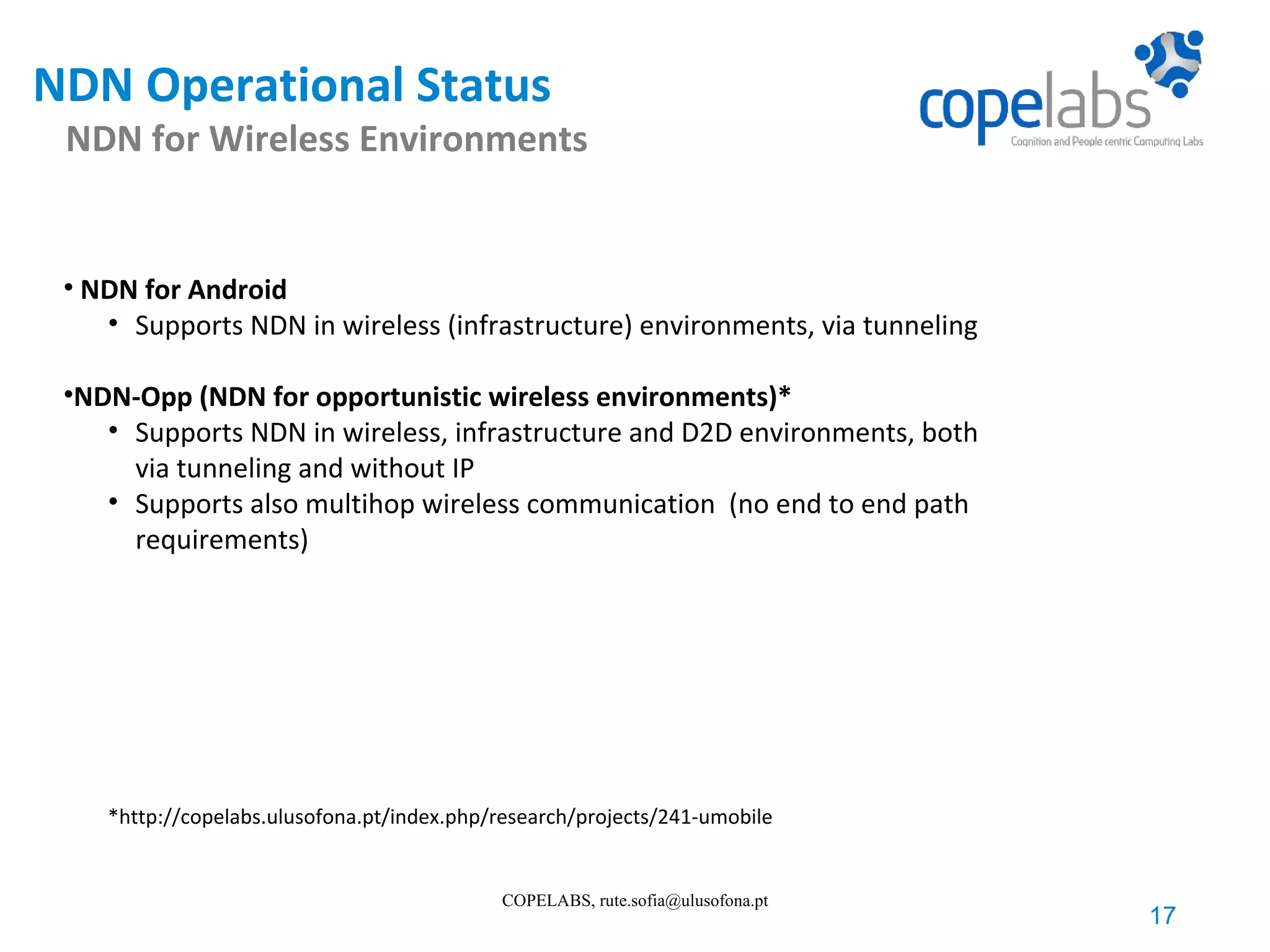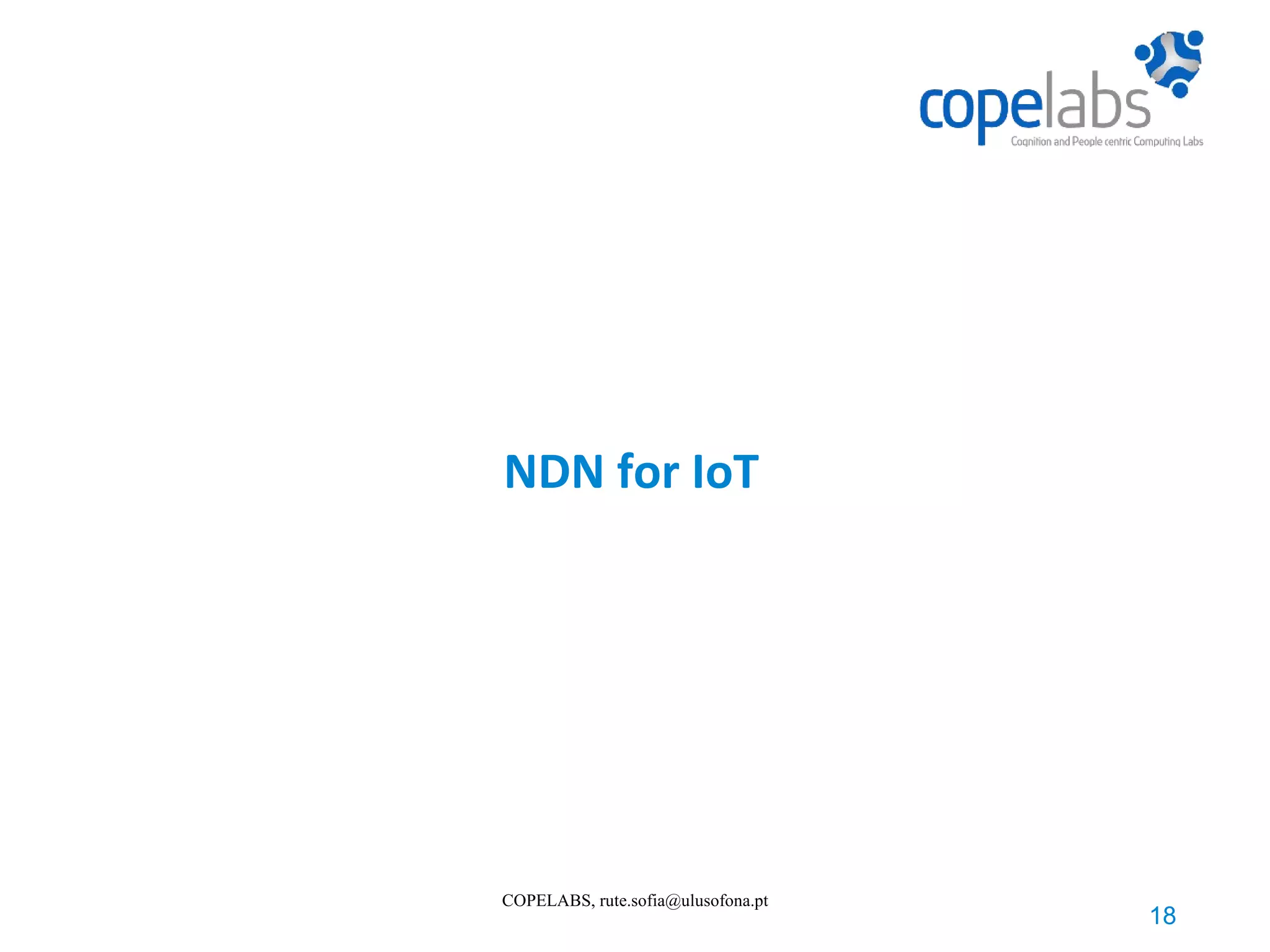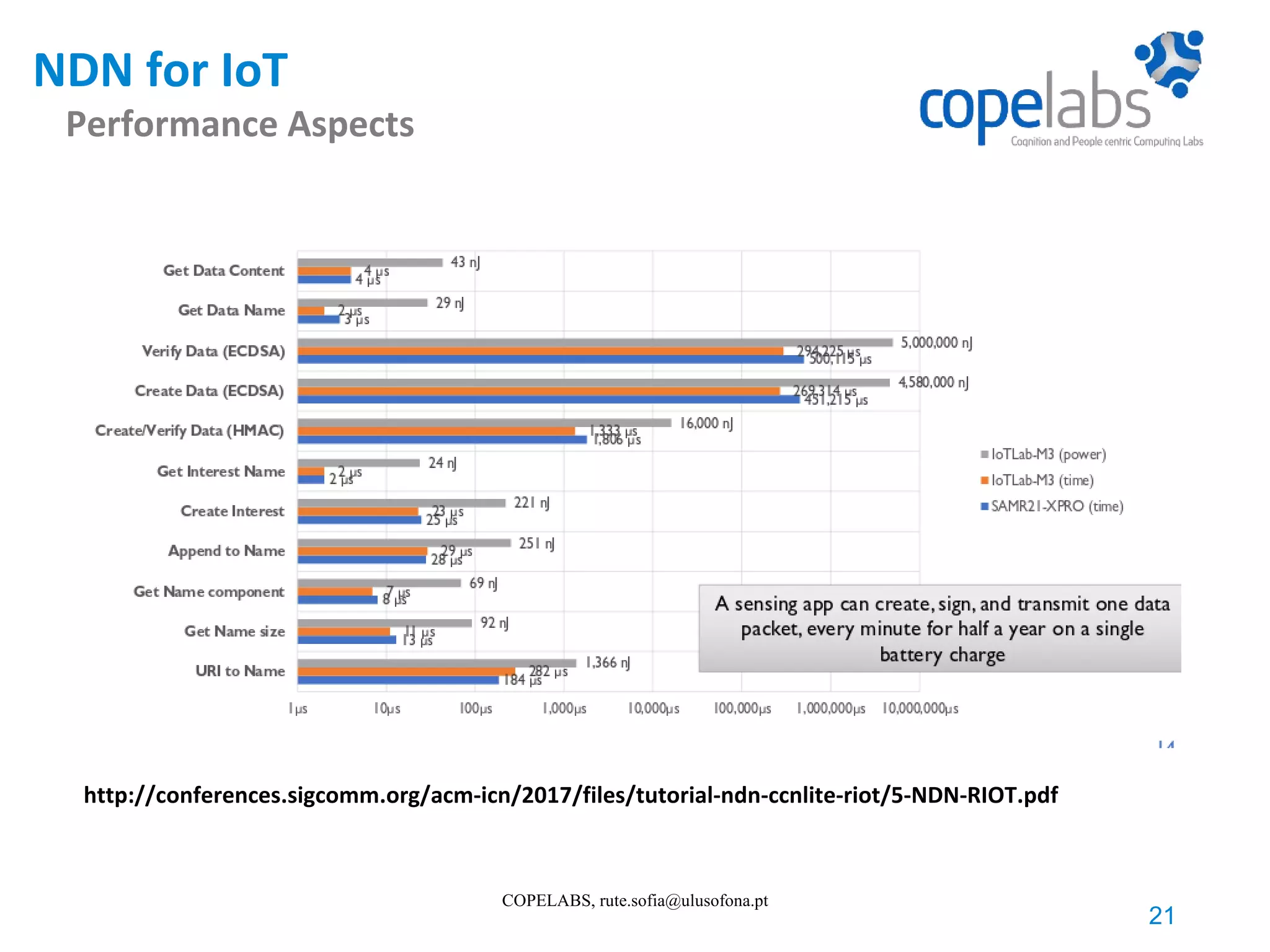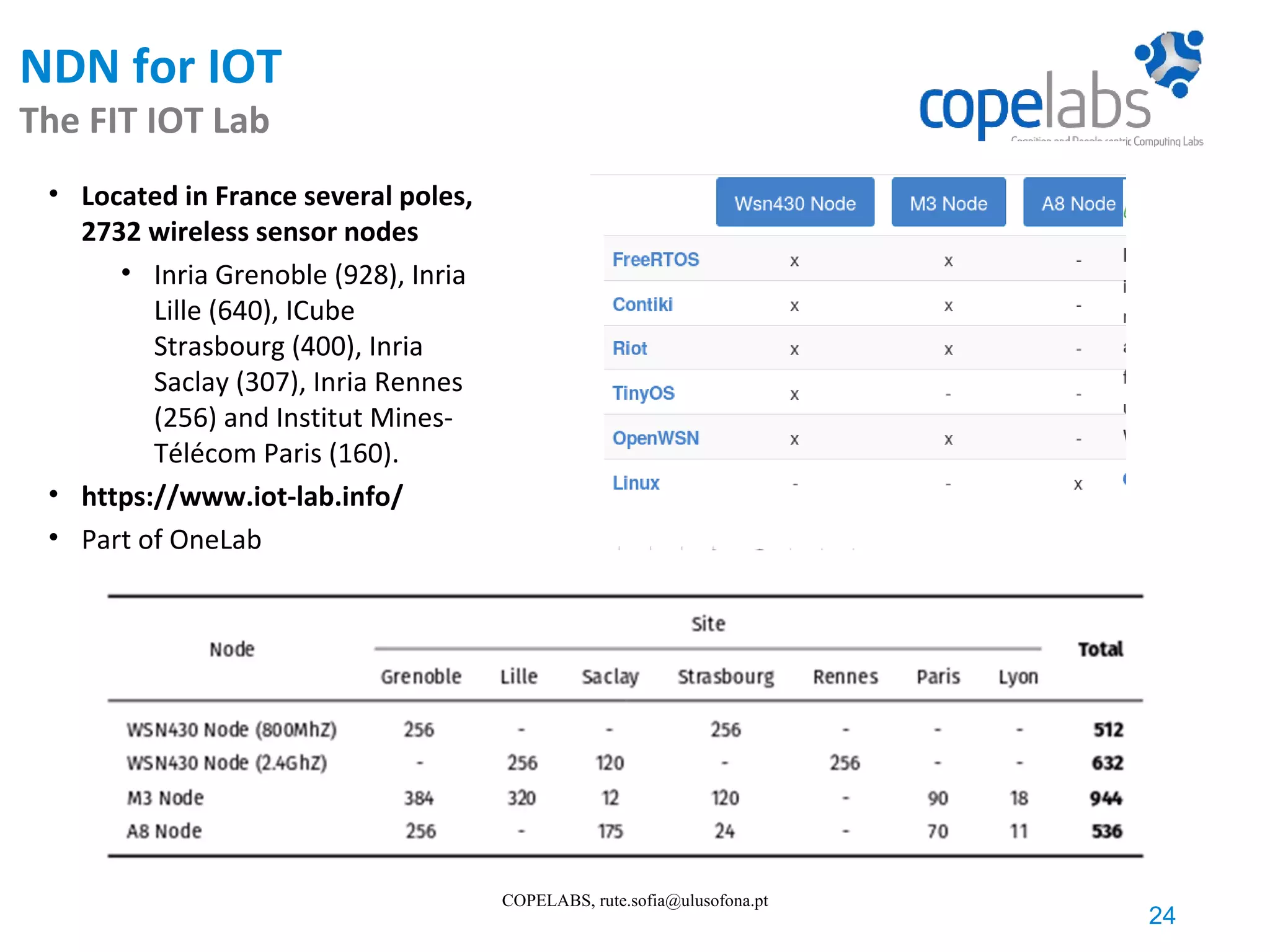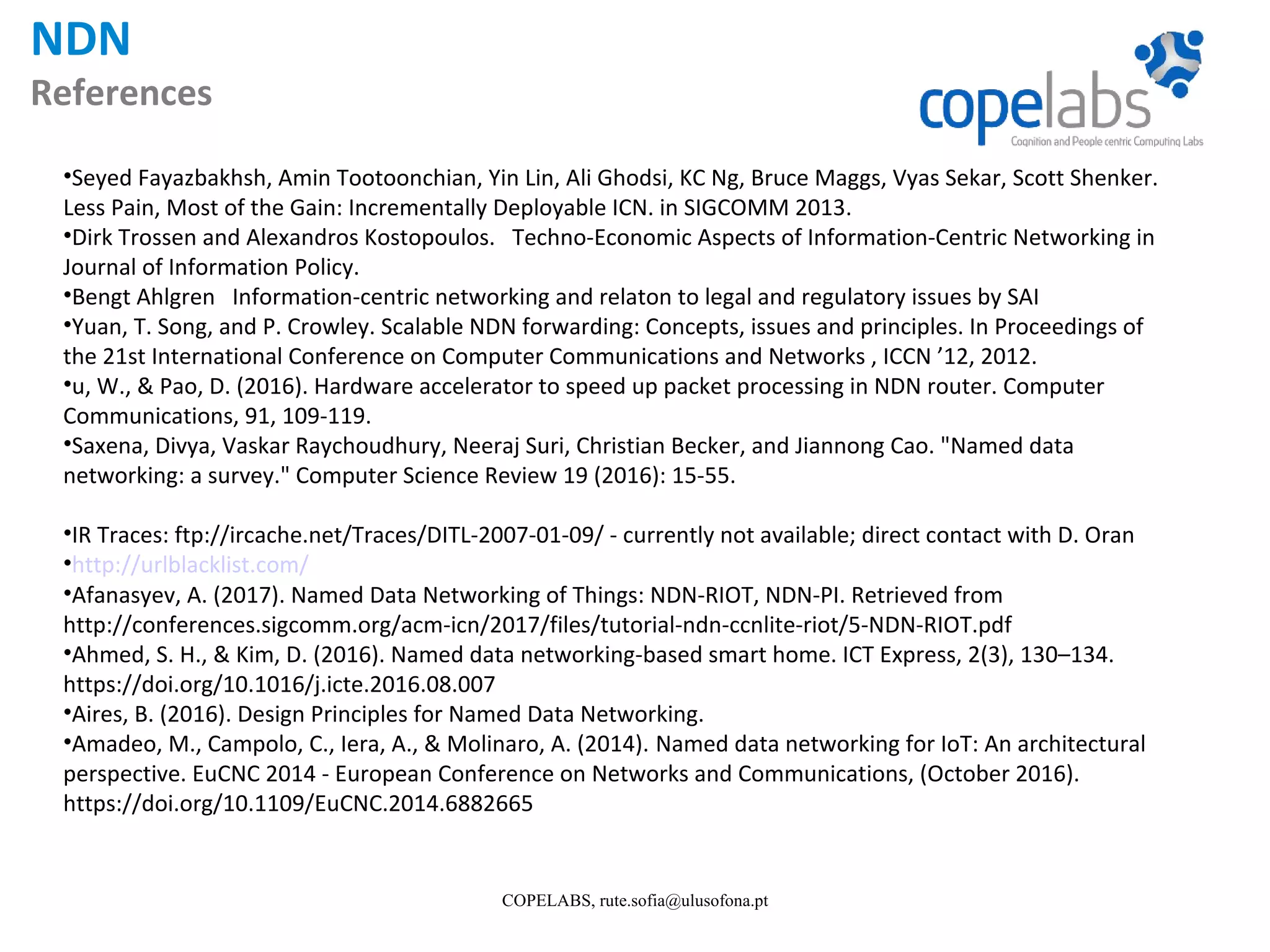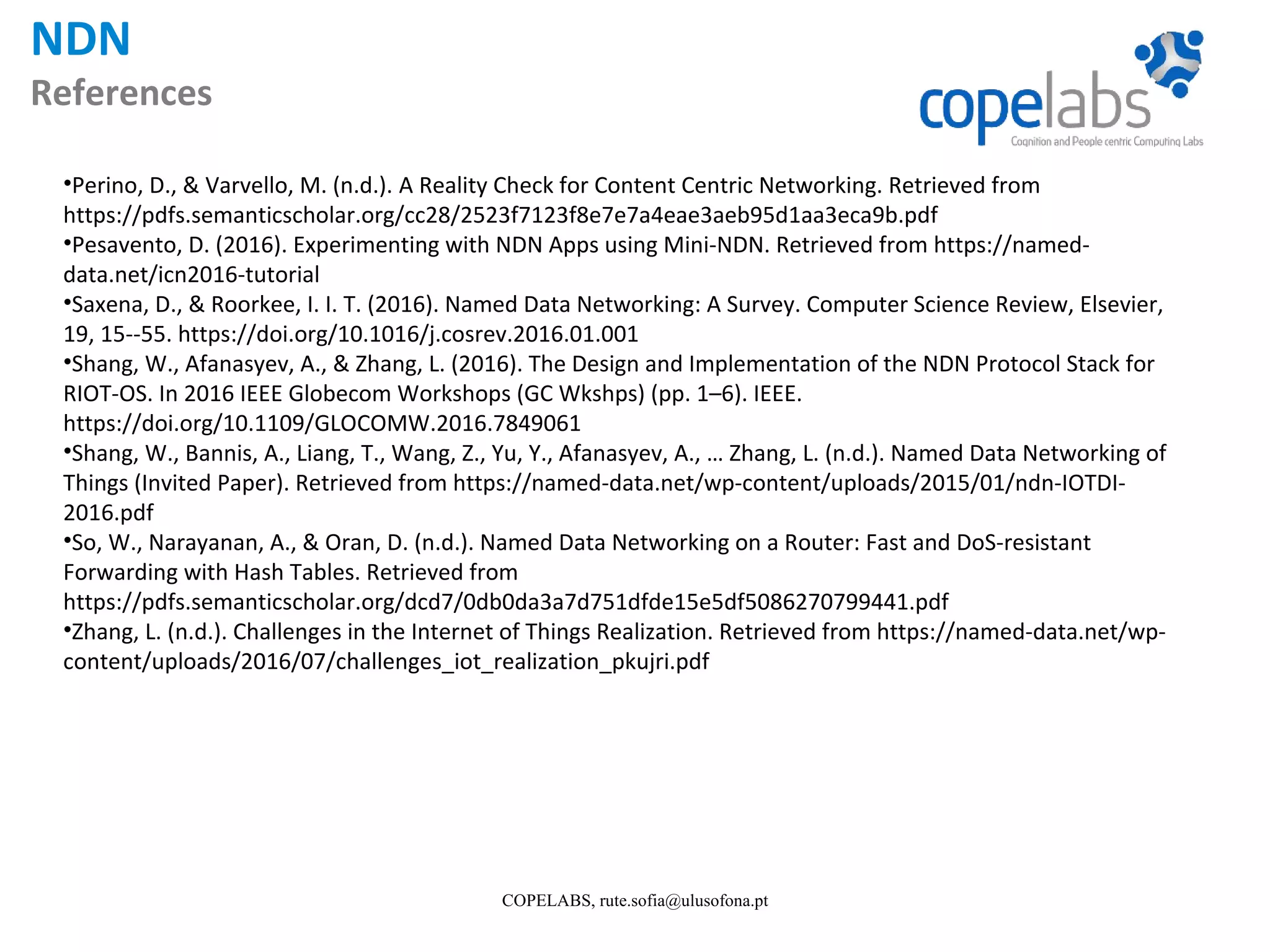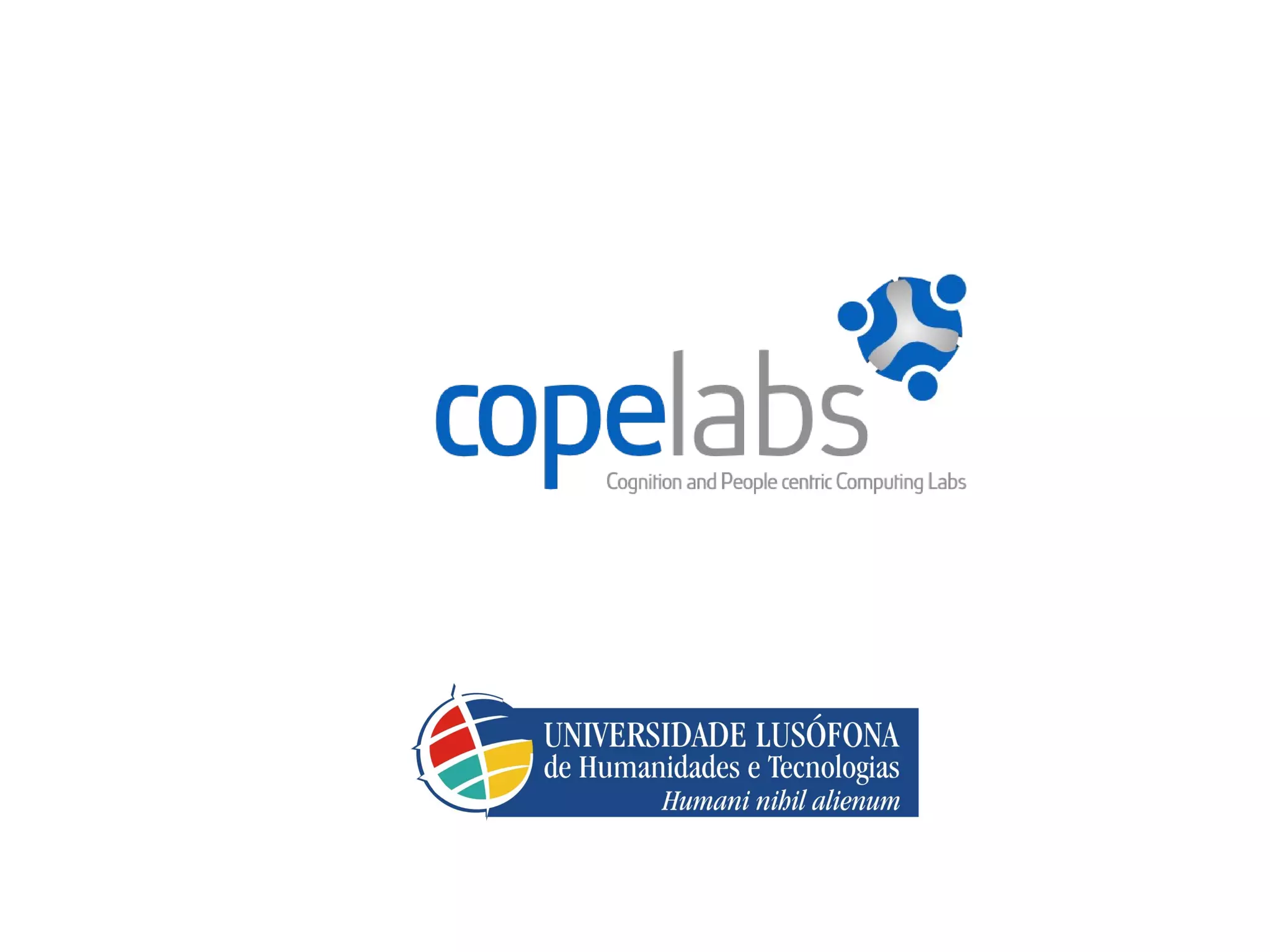The document discusses Named Data Networking (NDN) and its operational aspects, including: 1. NDN claims several gains over IP such as lower latency, reduced congestion, and intrinsic security, but also has challenges like requiring router caches and upgrades. 2. NDN has been tested on experimental testbeds for both fixed and wireless environments, as well as for IoT applications using the NDN-RIOT implementation. 3. Performance evaluations show NDN can forward traffic at rates over 20Gbps but routing approaches need more study, especially for wireless networks. The FIT IoT Lab provides an experimental facility for further IoT research.




